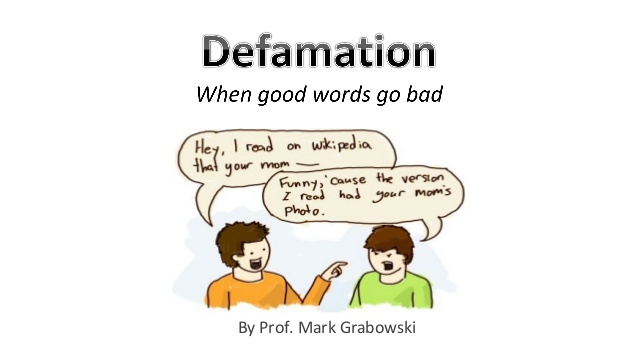
The law provides several defenses against defamation claim, but if the defenses failed, the defendant is liable to pay damages for defaming the Plaintiff.
1. Libel
Libel consists of a defamatory statement or representative in permanent visible form or is broadcast or is part of a theatrical performance. Examples of libel are a picture, statue, waxwork effigy or any writing, print, mark or sign exposed to view. Broadcasting here refers to radio communication to the public.
2. Slander
Slander on the other hand is a defamatory statement or representation in some transient form (non permanent) or is conveyed by spoken words, sounds or gestures.
For example, A saying to B that C is a thief, but it’s a false statement, A could have committed defamation against C.
Generally, for the case of slander, the Plaintiff does not need to prove that he has suffered any actual damages, because such damage is presumed (of course there are some exception to this).
Under the Malaysia’s Defamation Act 1957, if any words spoken or published that impute unchastity or adultery to any woman or girl, it shall not require special damage to be proven.
For example, woman A calls woman B a “prostitute” in front of everyone, imputing adultery or unchastity against woman B. Woman A could have committed slander.
Furthermore, any words disparaging another person in any office, profession, trade or business could be considered slander.
For example, in a Malaysia case that took place in 1984, the Court held that the lawyer who called a registrar of the Court corrupted was found liable for slander.
So, what is defamation really? In Malaysia, a defamation could be any imputation which may tend to “lower someone’s image in the eye of the public” or “to expose him to hatred” or “to discredit him” or “to injure his reputation in his office”. Such imputation may be defamatory whether or not it is believed by those who heard or seen it.

HOWEVER……. There are defences available for the Defendant if he is being sued by a Plaintiff for defamation. The are many defences but generally, these are the defences that are commonly used in a defamation suit.
1. Justification
A defamatory imputation can be justified if what was said or published is true.
For example, A says to B that C has committed adultery. In this case, if A is sued by C for defamation, A has a defence if A can prove that his statement is true. It is not enough for A to merely believe that C has committed adultery.
2. Fair comment
Another defence available is where the statement made or published by the Defendant is a fair comment on a matter of public interest.
For example, to say that “A has committed a breach of trust and therefore A is a disgrace to the company”, the word referring A as a disgrace to a company is a plain comment on the true fact that A has committed breach of trust.
However, if A has not been proven to have committed breach of trust, such statement is not a fair comment and could expose the person who made the statement to a defamation suit.
3. Unintentional defamation
The Malaysia’s law allows the person who committed defamation to avoid paying damages for an unintentional defamation. He must publish a reasonable correction and apology to the defamatory statement made and he must also pay reasonable costs and expenses incurred as a consequences of the publication in question.
AS A CONCLUSION, the above is just a few of a thousands of example for defamation and how it can occur, the best way to avoid being sued for defamatory is to be wary of statement made or published to the public which may involve the reputation of another person, especially in the 21st century, a lot of defamatory statements can easily find their way to social media like Facebook.
Please click here for mandarin version.
Written by: Stanley Phang Weng Lam, LLB(Hons) Cardiff, CLP, Adjudicator
DISCLAIMER: The information provided on this website does not, and is not intended to, constitute legal advice; instead, all information, content, and materials available on this site are for general informational purposes only.
Image by William Iven from Pixabay

